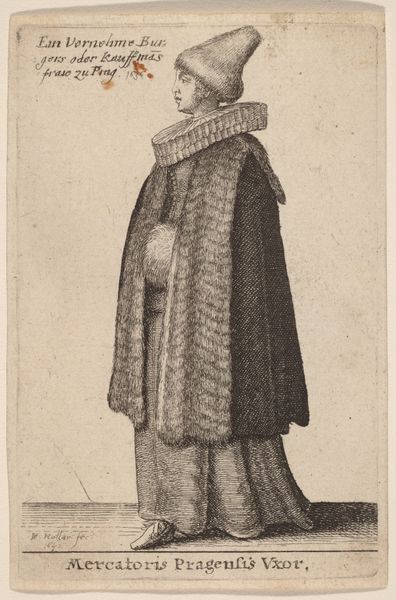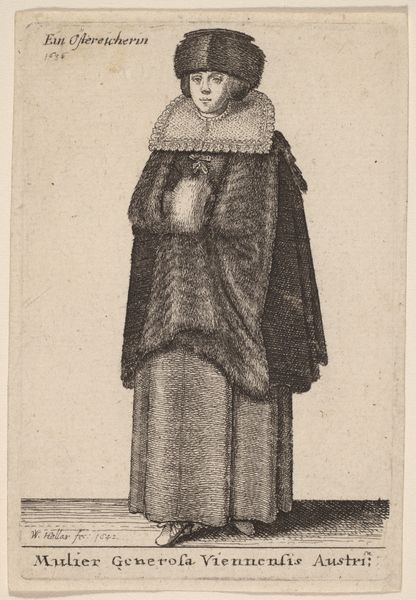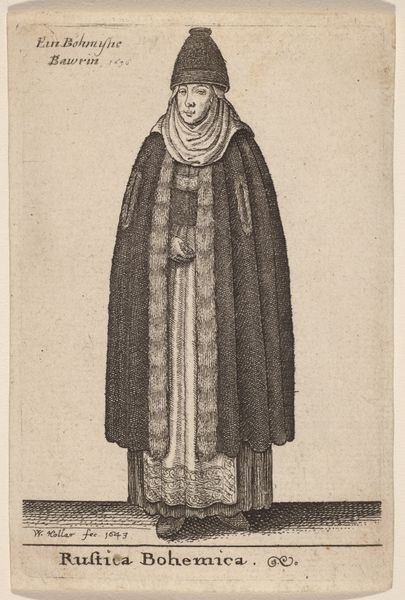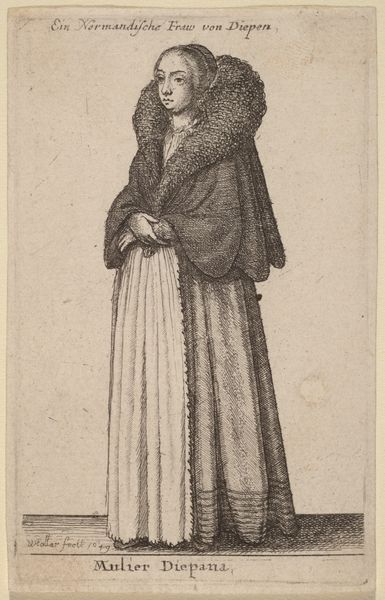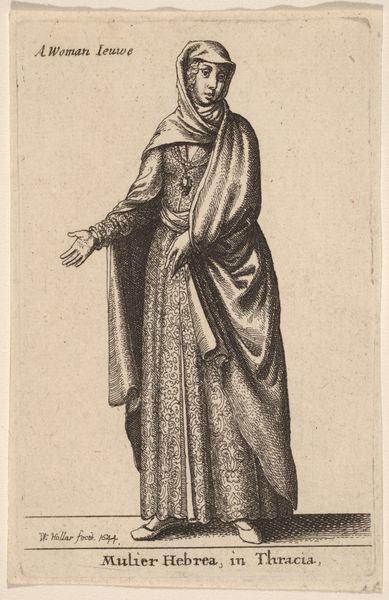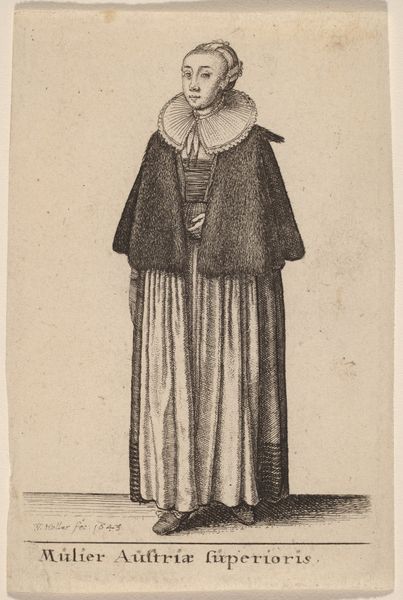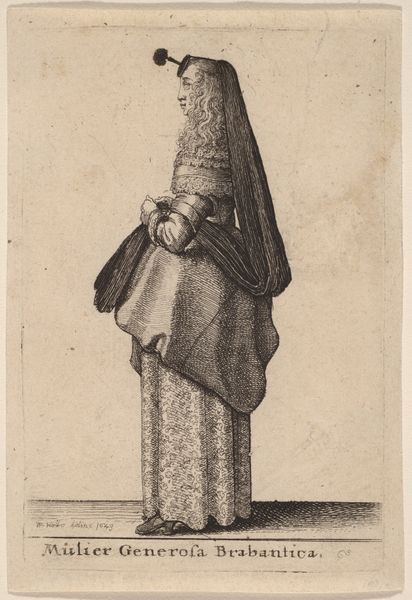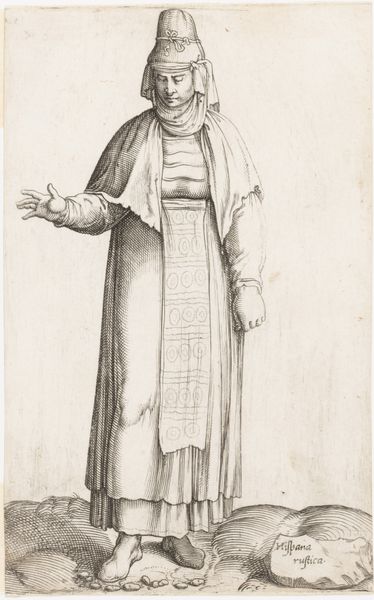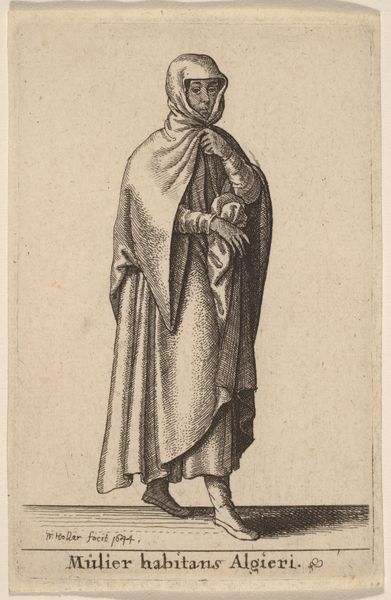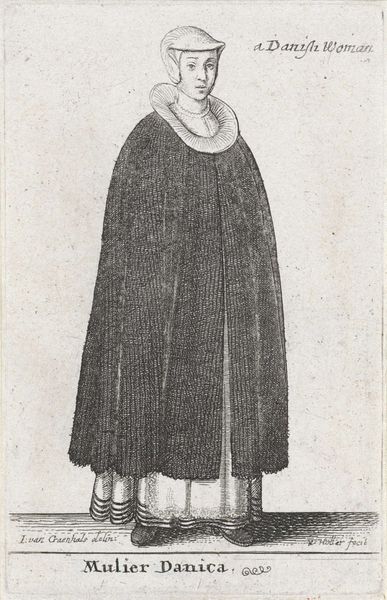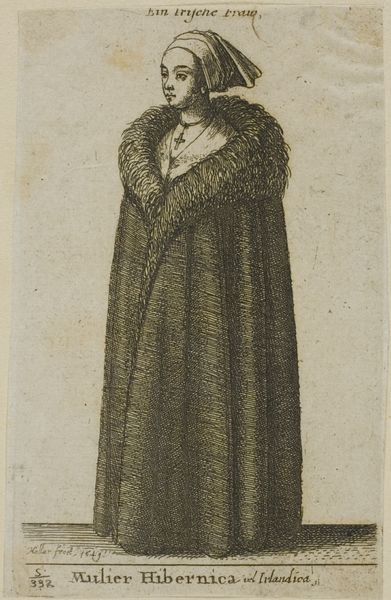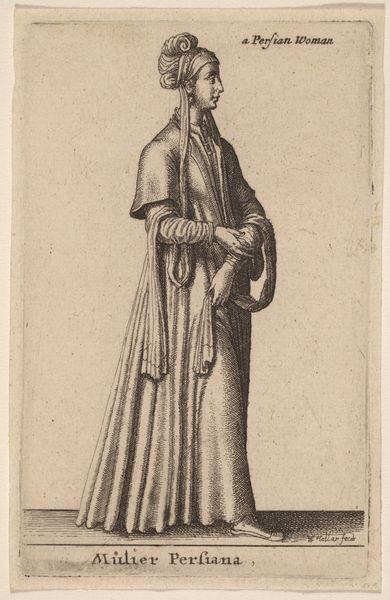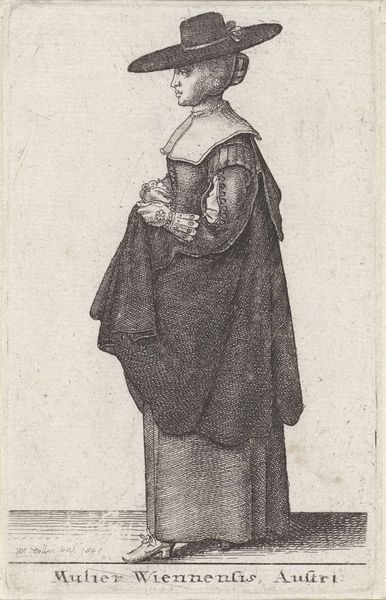
print, etching
#
portrait
#
baroque
# print
#
etching
#
figuration
Copyright: National Gallery of Art: CC0 1.0
Editor: Here we have Wenceslaus Hollar's "Nobilis Mulier Bohemica," created in 1649 using etching techniques. It's a print of a Bohemian noblewoman, and my immediate reaction is just how… wintry she looks! All that fur! What stands out to you? Curator: Oh, darling, doesn't she look like she's stepped right out of a fairytale? A queen, perhaps, who’s as shrewd as she is draped in finery. But look closer, past the fur. See how Hollar uses the etching to convey not just wealth but texture, the very feel of velvet and the gleam of a jewel? He isn't just depicting a woman; he's whispering stories about her world. Tell me, what do you think she's thinking? Editor: That's a great question! She looks so… reserved, maybe a little melancholic? Considering the period, the Thirty Years' War had just ended – perhaps she’s contemplating the cost of it all? Curator: Precisely! Art doesn't exist in a vacuum. Hollar himself experienced the war’s turmoil. Imagine him, etching away at this plate amidst such upheaval. Doesn’t that make her silent grandeur speak even louder? Almost a defiance against the chaos? It makes you wonder about the power, and the burden, of status. Editor: Absolutely! It’s like the portrait captures a moment of quiet strength amidst a turbulent world. Seeing the historical context really transforms how I view it. Curator: That's the magic of art, isn't it? It invites us to be present, curious, and alive in worlds both real and imagined. Thank you, I may have learnt something too. Editor: Definitely. This has given me so much to think about.
Comments
No comments
Be the first to comment and join the conversation on the ultimate creative platform.
